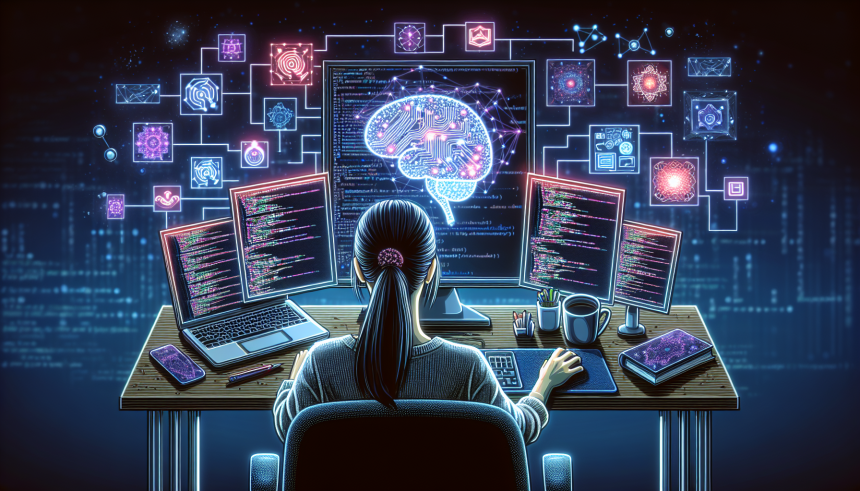The Importance of Integration for Developers in the Age of AI
Understanding Integration in Software Development
Integration in software development refers to the process of combining various components or systems into a cohesive framework that functions seamlessly. For developers, this is increasingly vital, particularly in the context of Artificial Intelligence (AI). As AI technology becomes more ubiquitous, ensuring that different software applications work together effectively is paramount for leveraging the full potential of AI capabilities.
Types of Integration
-
Application Programming Interface (API) Integration: APIs provide the necessary hooks for different software applications to communicate. In the age of AI, APIs facilitate the integration of machine learning models with existing software, allowing developers to enhance user experiences with AI-driven functionalities.
-
Data Integration: Integrating data from multiple sources is essential, especially given the voluminous data generated today. Data warehouses and lakes serve as central repositories that consolidate information from disparate systems, enabling developers to build AI models based on comprehensive datasets.
-
Cloud Integration: As businesses adopt cloud solutions for scalability and flexibility, cloud integration has become crucial. This type of integration connects various cloud services and on-premise systems, allowing for the smooth exchange of data and functionalities, enhancing AI model performance and accessibility.
-
Process Integration: This involves aligning business processes with technology solutions to ensure optimal functionality. In the context of AI, smooth integration can allow for automated workflows, resulting in increased efficiency and significantly reduced human error.
Benefits of Integration for Developers
-
Enhanced Collaboration: With integration capabilities, developers can collaborate more efficiently. Integrated environments provide teams access to shared resources, making it easier to work on AI projects that require diverse skill sets.
-
Improved Efficiency: Integration minimizes manual interventions and reduces redundant tasks. Automated processes powered by AI can handle repetitive jobs, allowing developers to focus on more complex problem-solving tasks.
-
Higher Quality Outputs: Integrated systems provide developers with a clearer understanding of how different components interact. This clarity ensures that AI models are trained on high-quality data, ultimately leading to better performance and accuracy in their outputs.
-
Scalability: As AI technologies evolve, the need for scalability becomes critical. Well-integrated systems enable developers to scale applications and incorporate new features rapidly, responding to market demands and user feedback with agility.
-
Real-Time Insights: AI thrives on real-time data. Integration facilitates the seamless flow of information between different systems, allowing developers to build applications that provide real-time analytics and insights, thus enhancing decision-making processes.
-
Interoperability: In an environment where multiple tools and platforms are used, interoperability becomes essential. Integrated solutions ensure that various systems, whether they are built in different programming languages or designed for distinct purposes, can work together efficiently.
Integration Challenges for Developers
-
Complexity: The complexity of integrating different systems can often overwhelm developers. Each integration may require extensive knowledge of different APIs, data formats, and protocols, making the learning curve steep.
-
Data Silos: When data remains isolated within systems, it prevents developers from accessing critical information needed for AI project success. Breaking down these silos involves significant effort in data integration and governance.
-
Security: With increased integration comes an expanded attack surface, increasing security risks. Developers must ensure that integrated systems adhere to stringent security protocols to protect sensitive data, especially when dealing with AI models that may process personal or confidential information.
-
Vendor Lock-In: Utilizing proprietary integration platforms can lead to vendor lock-in, which reduces flexibility. Developers dealing with AI must carefully evaluate integration solutions to avoid being tied to a single vendor’s ecosystem.
-
Version Control: Managing updates and versions across integrated systems can be challenging. A change in one system may create compatibility issues with another, highlighting the need for robust version control mechanisms.
Strategies for Effective Integration
-
Modular Architecture: Adopting a modular architecture allows developers to integrate various components individually. This approach not only facilitates easier updates but also improves the maintainability of AI systems.
-
Use of Middleware Solutions: Middleware can act as a bridge between different applications and services, simplifying integration processes. By abstracting complexities, middleware allows developers to focus on core functionalities while ensuring efficient communication between systems.
-
Emphasize Standardization: Utilizing standardized protocols and data formats can streamline the integration process. Developers should prioritize compatibility to ensure that disparate systems can interact effortlessly.
-
Continuous Monitoring and Testing: Continuous integration and deployment practices can help in proactively identifying issues related to interoperability. A robust testing framework must be in place to ensure that integration maintains system integrity over time.
-
Automated Workflows: Implementing automation tools can streamline integration tasks. Automated workflows ensure that data flows seamlessly between systems, minimizing the risk of human error and speeding up integration times.
-
Collaboration Tools: Utilizing project management and collaboration tools can facilitate communication among development teams. Tools that focus on sharing documentation and tracking integration tasks can enhance developer productivity.
Conclusion
In the rapidly evolving landscape of AI within software development, integration remains a cornerstone of innovation. As developers face new challenges and opportunities, mastering integration strategies is not just beneficial; it is essential for harnessing the transformative power of AI. Building a cohesive, integrated environment helps developers to elevate their projects to new heights, ensuring that they not only keep pace with technological advancements but also lead the way in creating impactful, intelligent applications.


